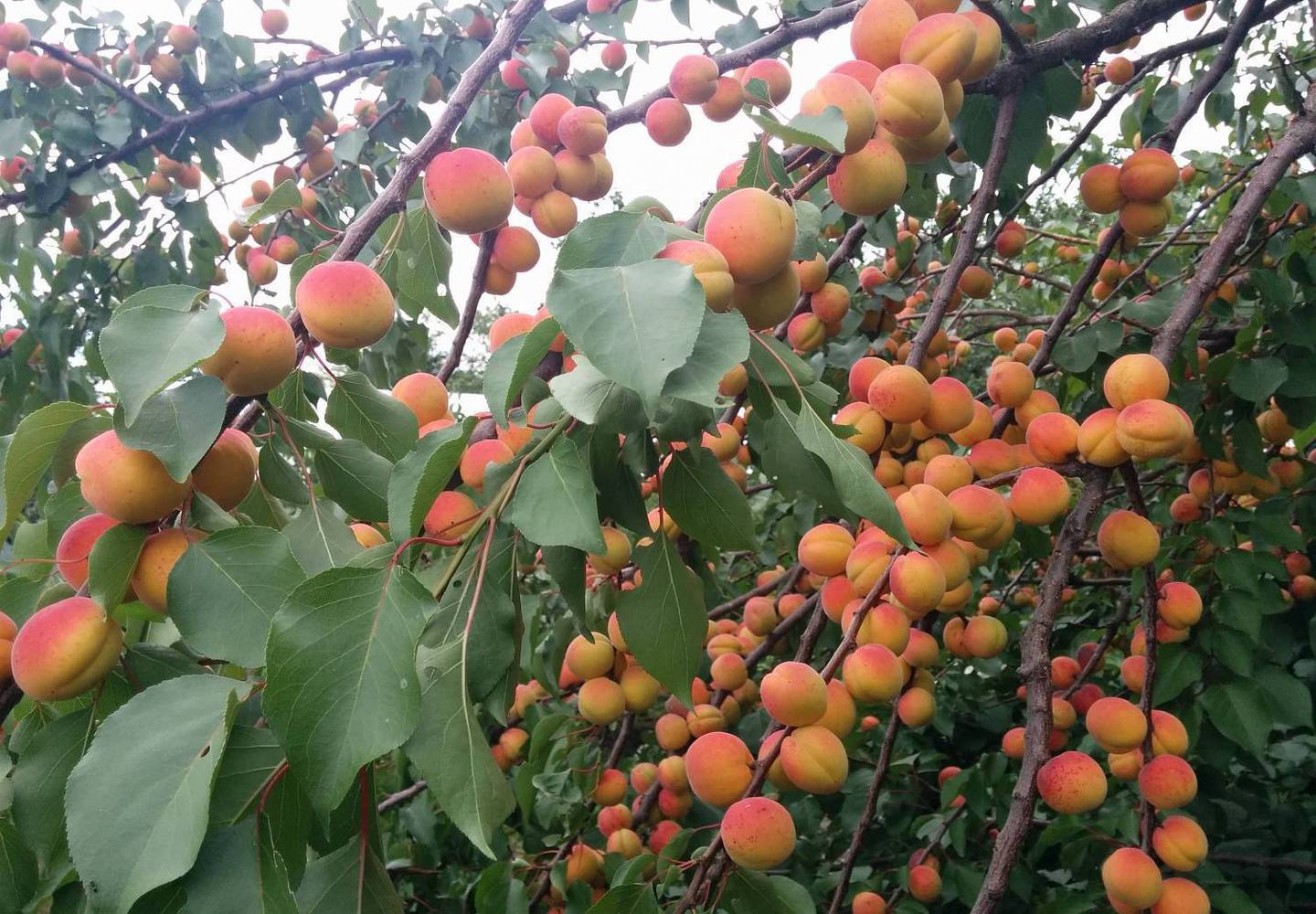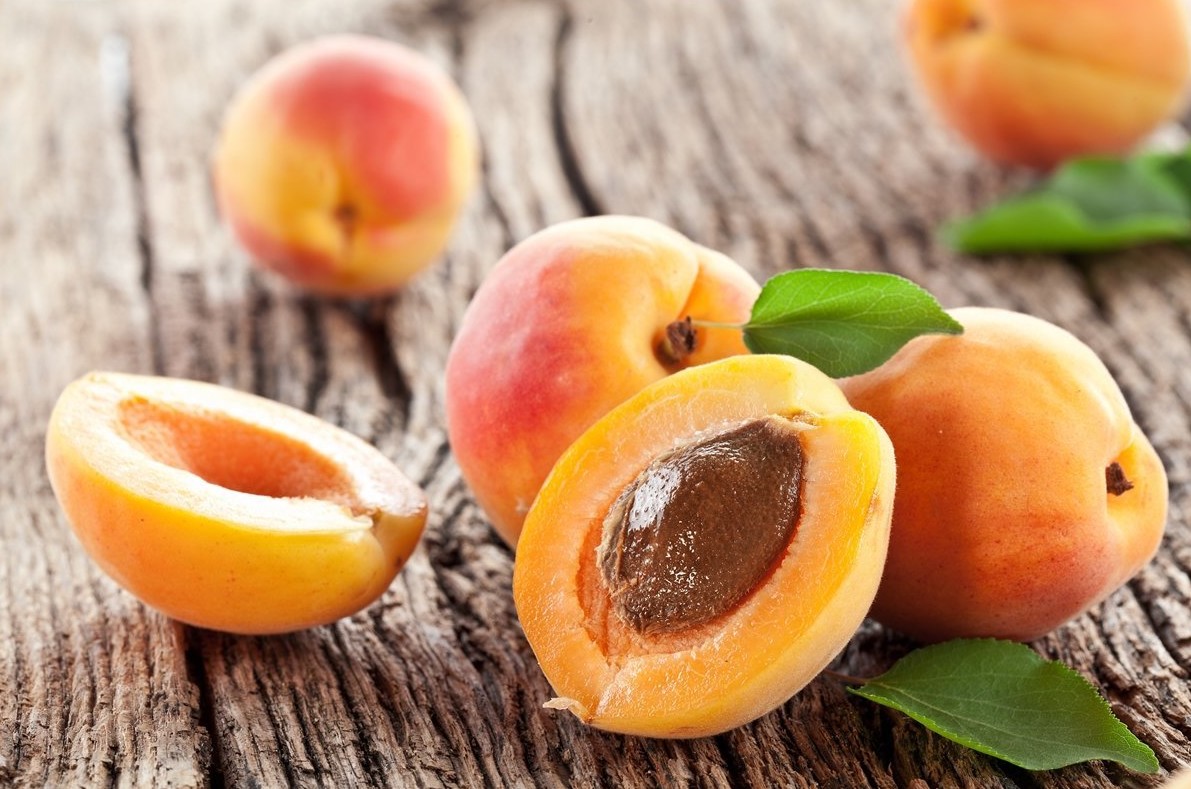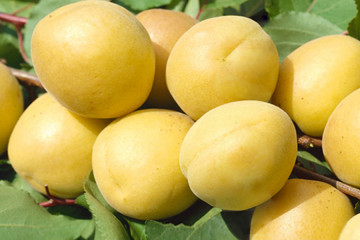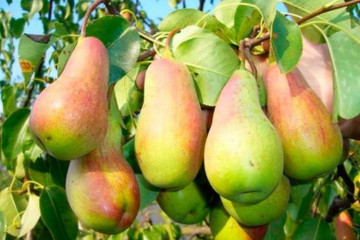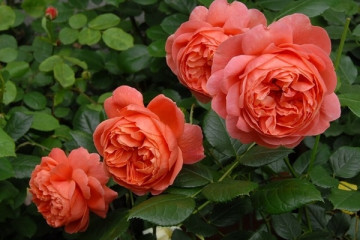Apricot Red-cheeked - description and characteristics of the variety
Content:
Apricot Red-cheeked - one of the oldest varieties of culture. It is popular with gardeners for its unpretentiousness, ability to withstand adverse climatic conditions. In addition, red-sided fruits are beautiful in appearance, tasty, fragrant. They contain a large amount of vitamins and minerals.
Breeding history
Central Asia is considered the birthplace of the red-cheeked apricot. The fruits were brought to Russia from Armenia. The red dot spot was fixed by the breeders of the Nikitsky Botanical Garden, located in the Crimea.
On its basis, other varieties of culture were bred, for example, the apricot Son of Krasnoshchekiy.
Description
The height of the trees is 3.5-4 meters. The crown is spreading, not prone to thickening. Fruits weighing up to 50 grams are formed on the branches. The description of apricots of the Krasnoshekiy variety says that their main color is golden orange. The sides of the fruit are pink-red. With good tree care, about 60 kg of delicious, aromatic apricots can be harvested.
Specifications
The variety is self-fertile. There is no need to plant pollinating trees nearby. Due to late flowering, the culture is not negatively affected by recurrent frosts. With good immunity to drought, the Red-cheeked Apricot is resistant.
In the first decade of April, pale pink inflorescences appear. In summer, fruits with a juicy pulp are formed from them. Apricots with dense skin tolerate transportation well. Without spoiling, they are able to persist for 10-13 days.
Growing regions
The variety is successfully grown in Central Russia. When cultivated in the suburbs, additional protection against freezing will be required. Trees in this region are planted on the south side of the building. When planting apricots in the Urals, a drainage layer is laid out in the pit. This is necessary for the reason that after the snow melts, stagnation of moisture in the soil can occur.
Advantages and disadvantages
The positive qualities of the Red-cheeked apricot include:
- self-fertility;
- winter hardiness;
- drought resistance;
- high productivity;
- good portability;
- great fruit taste;
- presentable type of fruit.
The disadvantage is the dependence of yield on weather conditions.
Landing rules
Seedlings should be purchased at a plant nursery or in a garden center from reliable sellers. Young trees should not have spots, dents, dry, damaged fragments.
In what time frame to plant
Red apricots are planted in spring or fall. The first option is used in regions with cold climates. Autumn planting is suitable for southern areas. It must be borne in mind that the seedlings should root well before the onset of frost.
Landing place
For a light-loving culture, you need to choose a well-lit place. When grown in partial shade, the yield and taste of apricot are reduced. Groundwater should not come close to the ground surface. Excessive humidity can destroy the root system of trees.
Pit and seedling preparation
The site should be cleared of debris, dug up. The well must be prepared 2 weeks before planting the apricot. Otherwise, the root collar may sag in the future, which will reduce the growth and development of the tree. The depth of the pit is 70 cm, the diameter is 60 cm.
The seedling is placed in a bucket of water for a day. Several crystals of potassium permanganate can be poured there for disinfection. Dry or rotten roots should be trimmed back to healthy parts. A sharp, disinfected instrument is used for this.
Landing procedure
The prepared tree is planted as follows:
- A drainage layer is laid out at the bottom of the hole.
- They fill it with fertile soil.
- A seedling is placed in the middle, covered with soil.
- A peg is dug in next to it.
- Water the seedling abundantly.
To preserve moisture, the trunk circle should be covered with mulching material. Fruiting begins in the 3rd year after planting.
Seedling care
A young tree needs constant care. It consists in timely watering, weeding, feeding. For an even distribution of sunlight, the crown must be thinned periodically. For the winter, a young seedling is insulated. Mature plants have good frost resistance.
Watering
The land should be irrigated after the topsoil dries up. Apricot especially needs watering during flowering, during the ripening of fruits, after harvest. At the same time, they are also guided by weather conditions, since excess moisture will negatively affect the development of culture. In the middle of autumn, water recharge irrigation is carried out.
Loosening and weeding
So that a crust does not form on the surface of the soil, a loosening procedure is carried out. At the same time, moisture and air begin to penetrate deeper. Weeds should be removed as they can transmit diseases and pests.
Top dressing
Trees planted in fertile soil do not need feeding for the first 3 years. Then, a carbamide solution is introduced into the near-trunk circle in the spring. Organic is used before flowering. When the fruits begin to set, fermented chicken droppings are introduced into the soil.
How to deal with diseases and pests
The red-cheeked apricot has good immunity, but nevertheless, under unfavorable conditions, it can be struck by pathogenic microorganisms, harmful insects. Experienced gardeners give the following tips for dealing with diseases and pests:
- Remove fallen leaves and plant residues from the trunk circle.
- Whitewash tree trunks in late autumn.
- Remove dry, broken, diseased branches in a timely manner.
- Thin the crown.
- To strengthen the immune system, periodically add nutrients.
- To carry out preventive treatment of trees with special preparations.
Harvesting and storage
The fruits ripen gradually, so harvesting is done in several stages. This is best done in dry weather in the morning or evening. If apricots are picked slightly unripe, they can be stored in a cool room for 10-15 days. Useful fruits are consumed fresh, canned, dried, frozen.
Red-cheeked apricots are easy to grow. With proper adherence to agrotechnical measures, the tree will bear fruit for 45-50 years. Delicious and aromatic fruits have universal uses.

